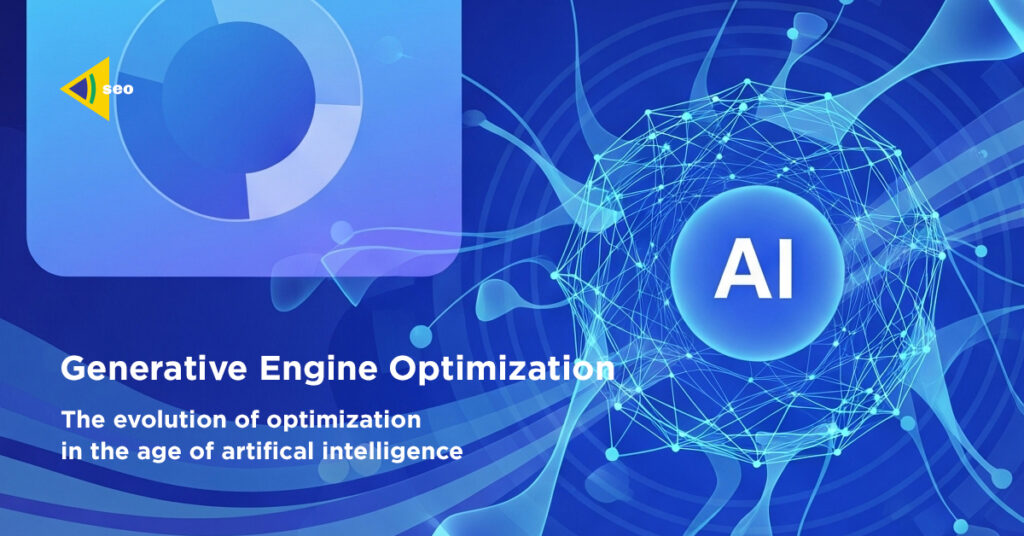
The digital landscape is undergoing a seismic shift. Traditional search engine optimization (SEO) is no longer the sole path to visibility. With the rise of AI-powered tools like Microsoft Copilot, ChatGPT, and Google’s Search Generative Experience (SGE), a new discipline has emerged: Generative Engine Optimization (GEO). This innovative approach focuses on optimizing content for AI systems that generate answers, summaries, and recommendations—rather than just ranking on search engine results pages (SERPs).
What Is Generative Engine Optimization?
Generative Engine Optimization is the practice of tailoring content to be discoverable, understandable, and usable by generative AI models. These models don’t just index web pages—they synthesize information from multiple sources to deliver direct responses to user queries. GEO ensures your content is selected, cited, and surfaced in these AI-generated outputs.
Unlike traditional SEO, which targets search engine algorithms, GEO targets the reasoning and language models behind AI tools. It’s about making your content AI-friendly, semantically rich, and contextually relevant.
Why GEO Is the Future of Search
Search behavior is evolving rapidly:
- Users increasingly rely on AI assistants for answers, skipping traditional search engines.
- Generative AI tools summarize content from multiple sources, often without linking to the original.
- Voice search and conversational interfaces demand concise, natural language responses.
In this new paradigm, visibility depends on whether your content is chosen by an AI—not just whether it ranks on Google. That’s where Generative Engine Optimization comes in.
How GEO Differs from Traditional SEO
| Aspect | Traditional SEO | Generative Engine Optimization |
|---|---|---|
| Target | Search engine algorithms | Generative AI models |
| Format | Web pages, meta tags, backlinks | Structured, conversational content |
| Goal | Rank on SERPs | Be cited or used in AI-generated output |
| Optimization Techniques | Keywords, link building, page speed | Semantic clarity, structured data, authority |
| Measurement | Click-through rate, traffic | AI citations, snippet inclusion |
GEO doesn’t replace SEO—it complements it. But as AI tools become the primary interface for information retrieval, GEO will become essential.
Key Elements of Generative Engine Optimization

To optimize for generative engines, you need to rethink how you create and structure content. Here are the foundational elements:
1. Semantic Richness
Generative AI models rely on semantic understanding. Use clear definitions, contextual explanations, and related terms to help models grasp your content’s meaning.
Tip: Instead of repeating keywords, use synonyms and conceptually related phrases.
2. Conversational Tone
AI tools favor content that mimics natural human dialogue. Write in a tone that’s friendly, informative, and easy to parse.
Example: Instead of “Our services include…” try “If you’re looking for help with…, here’s what we offer.”
3. Structured Formatting
Use headers, bullet points, tables, and FAQs to make your content scannable. This helps AI models extract relevant information efficiently.
4. Authoritativeness and Trust
Generative engines prioritize content from credible sources. Build authority through expert authorship, citations, and consistent quality.
5. Answer-Focused Content
Create content that directly answers common questions. Use formats like “What is…?”, “How to…?”, and “Why does…?” to align with user intent.
How to Implement Generative Engine Optimization
Ready to dive into GEO? Here’s a step-by-step strategy:
Step 1: Understand AI Query Patterns
Explore how users interact with AI tools. Use platforms like ChatGPT, Copilot, and Google SGE to see what types of questions are being asked in your niche.
Step 2: Create AI-Friendly Content
Focus on clarity, brevity, and relevance. Each piece of content should aim to answer a specific question or solve a particular problem.
Step 3: Use Structured Data
Implement schema markup to help AI systems understand your content’s context. Use FAQ, HowTo, and Article schemas to increase visibility.
Step 4: Optimize for Featured Snippets
Featured snippets are often used by generative engines. Format your content to target these snippets with direct answers, lists, and tables.
Step 5: Monitor AI Citations
Regularly test your content in AI tools. Ask questions and see if your site is referenced or summarized. Adjust your content based on what’s being surfaced.
Measuring Success in GEO
Success in Generative Engine Optimization isn’t just about traffic—it’s about presence in AI-generated outputs. Here’s how to measure impact:
- AI Citations: Is your content being referenced by tools like Copilot or ChatGPT?
- Snippet Inclusion: Are you appearing in featured snippets or answer boxes?
- Voice Search Results: Does your content surface in voice assistant responses?
- Engagement Metrics: Are users spending time on your pages after AI-driven discovery?
GEO and the Future of Content Strategy
As AI continues to reshape how users discover and consume information, Generative Engine Optimization will become a cornerstone of digital strategy. It’s not just about being found—it’s about being chosen.
Brands that embrace GEO will gain visibility in places traditional SEO can’t reach—from smart assistants to AI dashboards. Whether you’re a marketer, content creator, or business owner, now is the time to adapt.
Generative Engine Optimization represents a new frontier in digital visibility. It challenges us to think beyond keywords and rankings, and instead focus on clarity, relevance, and authority in the age of AI.
By aligning your content with the needs of generative engines, you ensure your voice is part of the conversation—no matter where or how users are searching.
If you want to learn about it more follow us.